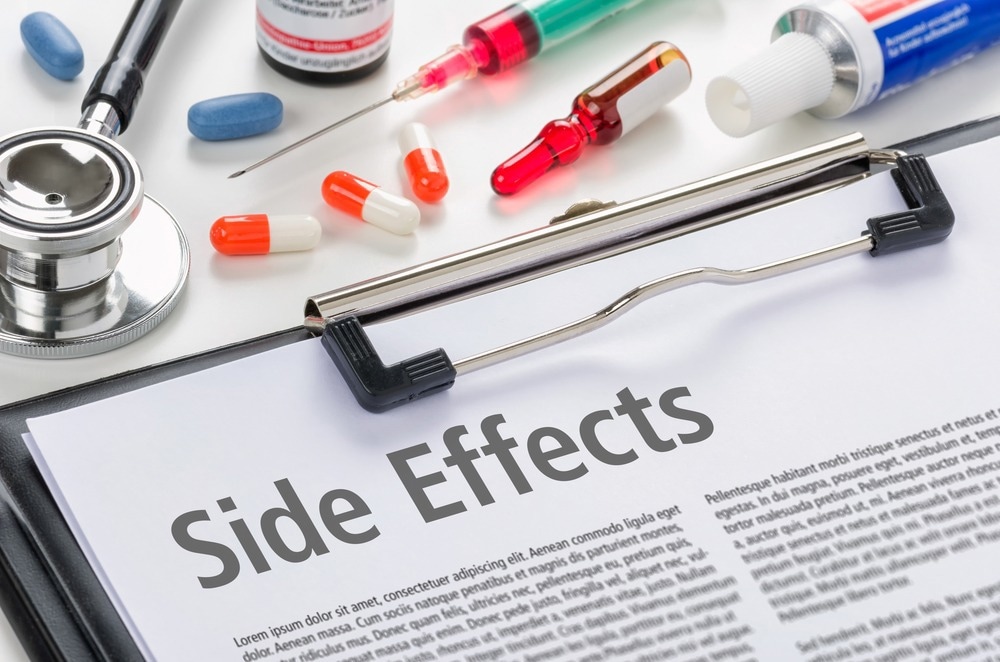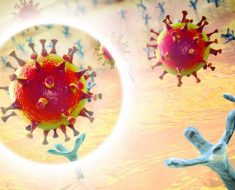Introduction
How are side effects identified during clinical trials?
Are side effects sometimes missed during clinical trials?
References
Clinical trials utilize multiple methods of tracking, categorizing, and assessing any side effects at each trial stage. A negative side effect during clinical trials, whether expected as a potential outcome or more spontaneous, is known as an adverse event, which is initially graded on a 1-5 scale, where grade 1 is mild and non-bothersome, while grade 5 adverse events are fatal.
Adverse events that cause death, persistent incapacity, induce congenital disabilities, or other serious injury are known as serious adverse events, while those that occurred during the clinical trial but may not have been related to the therapeutic under investigation are instead categorized as adverse reactions. Adverse events that are unexpected, being extremely non-typical to the medication or therapy applied, but which may still be related to the trial, are termed "suspected unexpected adverse events", referring to the suspicion of involvement.
Governmental and institutional organizations have made significant efforts to standardize the reporting of adverse events in recent decades in association with more rigorous and standardized reporting of the methods employed, allowing correlations between the trial and adverse events to be drawn. In the USA, the Food and Drug Administration sets out reporting requirements for clinical trials at each stage, and reporting must be considered even at the planning and funding stages for approval.

Image Credit: Zerbor/Shutterstock.com
How are side effects identified during clinical trials?
Clinical trials cover a wide variety of therapies, drug regimes, and novel substances that may each require particular attention to monitor adverse events. For example, in investigating the efficacy and safety of an allergen medication, monitoring of immunoglobulin G levels is relevant, along with other immunomodulatory markers, while clinical trials for pain medication are unlikely to monitor this aspect. The most common adverse events generally reported include symptoms such as localized pain, fatigue, headache, and other typical ailments, with a large portion considered preventable by some meta-studies.
Infections from the clinic or hospital setting make up a large portion of reported adverse events (or reactions), with surgical errors or mistakes while administering medication also contributing heavily to the number reported. By the time the therapy reaches the broad-scale human trial stage, rigorous safety experiments have already been performed, and probable adverse events related to the mechanism of action have been identified.
Where adverse events are discovered to be related to the mechanism of action of the drug or therapy at this late stage, perhaps through meta-study of clinical trials and amongst particular sub-sets of the population, they are often over-estimated due to the regression to the mean effect, i.e., in large sample sizes, random noise contributes to data points between the mean and the most extreme example, making the most extreme example appear to be a random overestimate of the true effect.
 Is Education Key to Accelerating Clinical Trial Participation?
Is Education Key to Accelerating Clinical Trial Participation?For example, during clinical trials for Simvastatin and Ezetimibe combination therapy for aortic-valve stenosis, cancer was suspected as a side-effect as the placebo group had only 65 instances of cancer compared to 101 amongst those receiving the drugs, with cancer-related deaths around proportionately higher (20 to 37). As the mechanism of action of the drugs left plausibility that they could cause cancer, the side effect was considered a serious adverse event, and dedicated follow-up studies were therefore performed to investigate the connection. No connection between Simvastatin/Ezetimibe treatment was found, and subsequent meta-studies have further demonstrated no statistically greater risk of cancer for those receiving the treatment.
Drug Discovery eBook

Owing to such statistical anomalies, researchers must ensure a sufficient number of patients are enrolled in clinical trials to know with some certainty that the adverse event is not related to treatment, allowing a lack of correlation to be established within a certain confidence range. The minimum number of patients that must participate depends on the apparent probability of the adverse event of interest occurring, where rarer events demand a higher patient number to demonstrate a connection to the clinical trial sufficiently.

Image Credit: l i g h t p o e t/Shutterstock.com
Are side effects sometimes missed during clinical trials?
During the relatively short time scale around which clinical trials operate, side effects related to particular medications or therapeutics can be missed, though usually relating to long-term conditions that do not materialize until well after the completion of the trial. For this reason, many pharmaceuticals have been withdrawn from the market following their release. For example, the anti-inflammatory medication valdecoxib was voluntarily withdrawn in 2005 due to safety concerns relating to cardiovascular events and life-threatening skin reactions after a decade on the market, while the psoriasis drug efalizumab was also voluntarily withdrawn in 2009 due to an association with progressive multifocal leukoencephalopathy, a rare and fatal central nervous system disease.
According to some studies, harm is frequently under-reported during clinical trials, either due to clinicians missing or not properly describing adverse events or to long-term issues not occurring within the study's time frame. Patient reports are therefore gathered as a more patient-centric approach towards adverse event data collection, which can be periodically gathered remotely for months or years following the completion of the trial.
For the identification of rare serious adverse events that do manifest for years or decades following clinical trial, only broad scale and careful tracking of outcomes can indicate side effect probability in a diverse population, though through careful trial design, the number of patients required for a complete analysis of safety within various demographics can be minimized.
References:
- Schwendimann, R., Blatter, C., Dhaini, S., Simon, M., & Ausserhofer, D. (2018). The occurrence, types, consequences, and preventability of in-hospital adverse events – a scoping review. BMC Health Services Research, 18(1). https://doi.org/10.1186/s12913-018-3335-z
- Fleming, T. R. (2008). Identifying and Addressing Safety Signals in Clinical Trials. New England Journal of Medicine, 359(13), 1400–1402. https://doi.org/10.1056/nejme0807372
- Senti, G., Moos, S., Tay, F., Graf, N., Johansen, P., & Kündig, T. M. (2015). Determinants of efficacy and safety in epicutaneous allergen immunotherapy: summary of three clinical trials. Allergy, 70(6), 707–710. https://doi.org/10.1111/all.12600
- Gu, J. et al. (2022) Ezetimibe and Cancer: Is There a Connection? Frontiers in Pharmacology, 13.
- Fanaroff, A. C., Haque, G., Thomas, B., Stone, A. E., Perkins, L. M., Wilson, M., Jones, W. S., Melloni, C., Mahaffey, K. W., Alexander, K. P., & Lopes, R. D. (2020). Methods for safety and endpoint ascertainment: identification of adverse events through scrutiny of negatively adjudicated events. Trials, 21(1). https://doi.org/10.1186/s13063-020-04254-w
Further Reading
- All Clinical Trial Content
- What is a Phase 0 Clinical Trial?
- What is a Phase 1 Clinical Trial?
- What is a Phase 2 Clinical Trial?
- What is a Phase 3 Clinical Trial?
Last Updated: Jan 31, 2023

Written by
Michael Greenwood
Michael graduated from Manchester Metropolitan University with a B.Sc. in Chemistry in 2014, where he majored in organic, inorganic, physical and analytical chemistry. He is currently completing a Ph.D. on the design and production of gold nanoparticles able to act as multimodal anticancer agents, being both drug delivery platforms and radiation dose enhancers.
Source: Read Full Article





